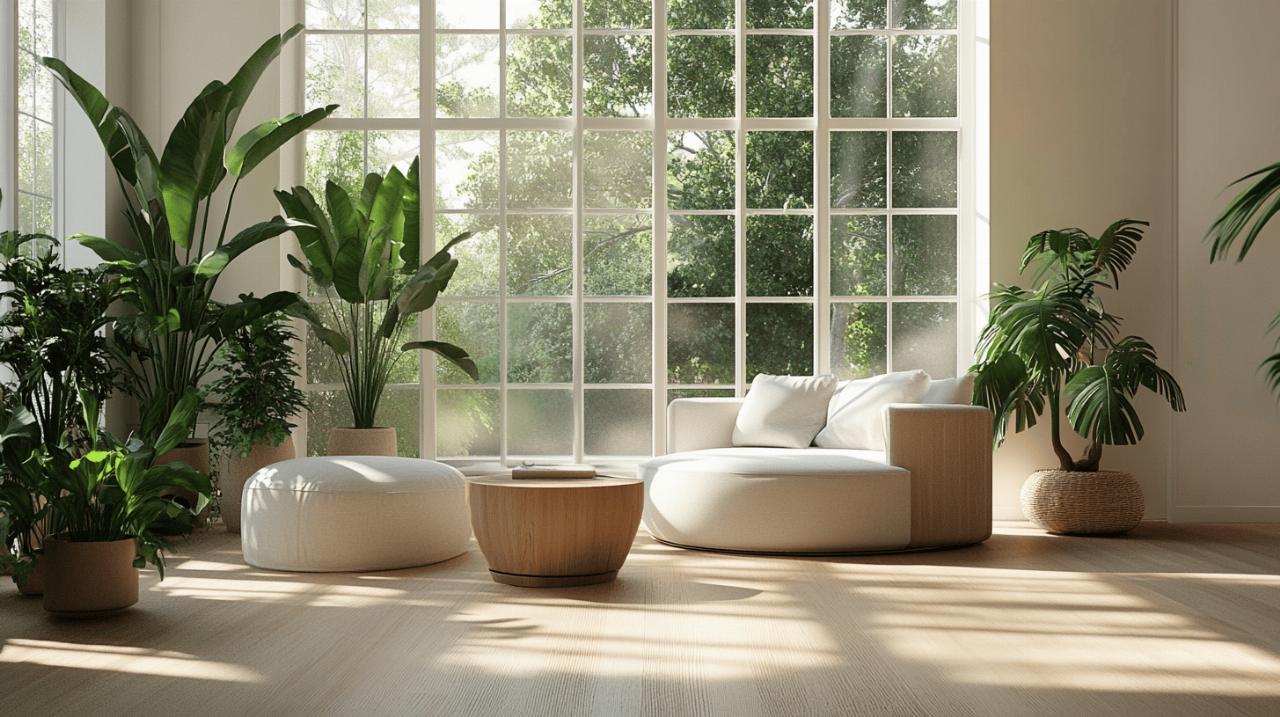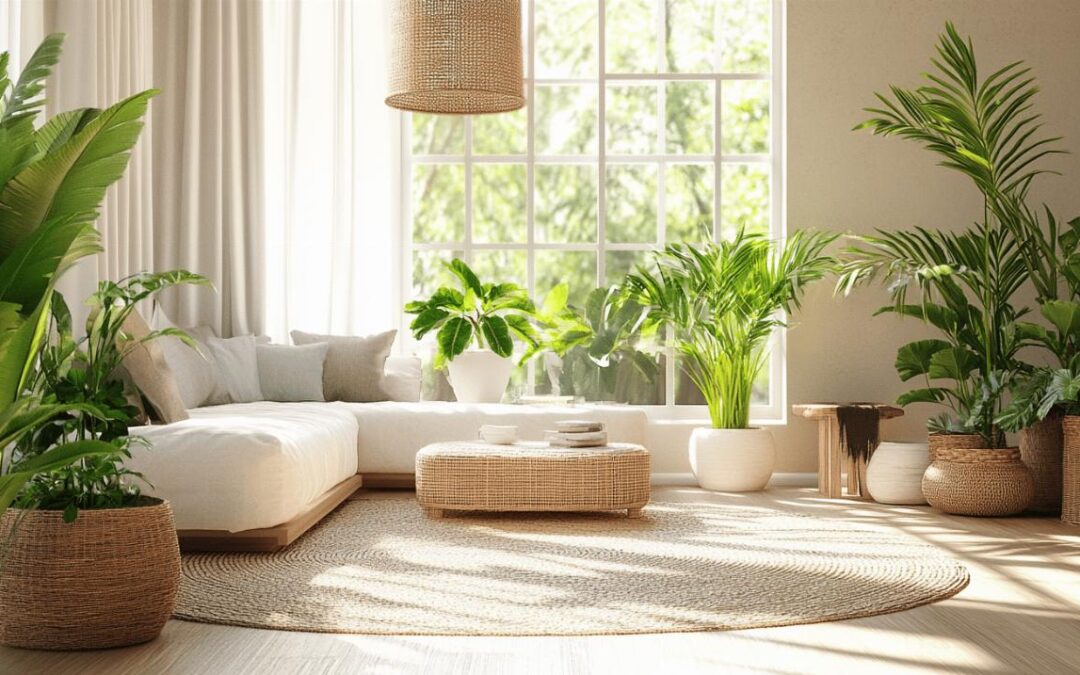When it comes to making environmentally conscious decisions for your home, flooring is one of the most impactful choices you'll make. With UK homeowners spending approximately £50 billion annually on home improvements, there's a growing market for sustainable options that combine style, functionality, and ecological responsibility.
Understanding sustainable flooring materials
Sustainable flooring utilises renewable, recyclable materials produced with minimal waste and energy consumption. The best Tiendas de Decoracion across the UK are now showcasing these eco-friendly alternatives that not only enhance your home's aesthetic but also contribute to environmental preservation. These sustainable options are designed to reduce your home's ecological footprint while creating beautiful living spaces.
The Benefits of Bamboo, Cork and Linoleum
Bamboo flooring represents one of the most rapidly renewable resources available, reaching maturity in just 3-5 years. This impressive growth rate makes bamboo an exceptionally sustainable choice compared to traditional hardwoods that may take decades to mature. Cork flooring offers another excellent eco-friendly option, harvested from cork oak trees primarily in Portugal every 9-12 years without harming the trees, which can continue producing cork for up to 200 years. Beyond its sustainability credentials, cork provides natural hypoallergenic properties and water resistance, making it particularly suitable for moisture-prone areas like kitchens and bathrooms.
Natural linoleum represents yet another sustainable option, crafted from a combination of linseed oil, cork dust, sawdust, and limestone. With an impressive lifespan of 20-40 years, linoleum provides excellent durability while being biodegradable at the end of its lifecycle. These materials offer environmentally conscious homeowners attractive alternatives to conventional flooring with significantly lower ecological impact.
Reclaimed timber: character with environmental benefits
Reclaimed wood flooring brings unique character and history into your home while preventing further deforestation. Sourced from old buildings, barns, and other structures, this material gives new life to timber that might otherwise end up in landfills. Reclaimed wood often displays distinctive patina, grain patterns, and natural weathering that new products simply cannot replicate. Additionally, older timber tends to be more stable and less prone to warping than newly harvested wood, as it has already completed much of its natural settling process over decades of use.
When selecting wood flooring from virgin sources, prioritising FSC-certified products ensures the timber comes from responsibly managed forests. Native species like oak and pine generally represent more sustainable choices than exotic hardwoods, which often involve more intensive harvesting and transportation impacts.
Health considerations for eco-friendly flooring
Decoding voc emissions and certification standards
Truly sustainable flooring goes beyond environmental impact to address health concerns within your home. Many conventional flooring materials and their installation products contain volatile organic compounds (VOCs) that can release harmful gases into your indoor air for years after installation. These emissions may contribute to respiratory issues, headaches, and other health problems. Eco-friendly alternatives focus on minimising or eliminating these chemicals, creating healthier living environments.
When shopping for sustainable flooring, look for respected certifications that verify environmental and health claims. The EU Ecolabel and Cradle to Cradle (C2C) certification provide assurance that products meet stringent standards for sustainability and low chemical emissions. These certification systems evaluate multiple aspects of products, including material sourcing, manufacturing processes, and end-of-life considerations.
Non-toxic adhesives and installation methods
The environmental impact of flooring extends beyond the materials themselves to include installation methods and required adhesives. Traditional installation often involves chemical-heavy adhesives that can compromise indoor air quality and pose disposal challenges. Sustainable flooring solutions frequently offer alternative installation methods, such as click-lock systems that eliminate the need for adhesives entirely or options that use non-toxic, water-based adhesives with minimal environmental impact.
Professional installers experienced with eco-friendly flooring can recommend appropriate techniques and products that maintain your commitment to sustainability throughout the installation process. This holistic approach ensures that your flooring project remains environmentally responsible from manufacture through installation and beyond.
Durability and lifecycle assessment
Evaluating longevity to minimise replacements
A crucial aspect of sustainable flooring that often goes overlooked is longevity. Durable materials that resist wear and maintain their appearance over time reduce the frequency of replacements, thereby lowering the overall environmental impact of your flooring choices. Natural stone flooring exemplifies this principle, with potential lifespans exceeding 100 years and complete recyclability at end-of-life. Similarly, quality hardwoods and engineered wood products can last for generations when properly maintained.
When evaluating flooring options for high-traffic areas, consider materials specifically designed for durability, such as bamboo or certain luxury vinyl tiles made from recycled materials. These products may require a higher initial investment but offer better value and environmental performance over their extended lifespans compared to less durable alternatives that require frequent replacement.
Maintenance requirements and ecological impact
The environmental footprint of flooring continues long after installation through the cleaning and maintenance practices required throughout its lifespan. Some flooring materials demand harsh chemical cleaners or energy-intensive maintenance procedures that undermine their ecological benefits. Truly sustainable options should require minimal maintenance using environmentally friendly cleaning products.
Cork and linoleum, for instance, naturally resist bacteria and require simple cleaning with mild solutions. Similarly, properly finished hardwoods and bamboo can be maintained with non-toxic cleaners and occasional refinishing rather than replacement. Consider both the immediate and long-term maintenance requirements when selecting eco-friendly flooring to ensure your choice remains sustainable throughout its lifecycle.
Environmental Impact of Production and Transport
Carbon footprint analysis of different flooring options
Manufacturing processes significantly influence the overall environmental impact of flooring materials. Conventional carpet production for a small house typically consumes resources equivalent to 80 gallons of petrol, highlighting the substantial carbon footprint of some traditional flooring options. By contrast, natural materials like wool, sisal, coir, and jute offer recyclable and biodegradable alternatives with considerably lower production impacts.
Innovative manufacturers are also developing eco-friendly options from recycled materials. Carpets made from reclaimed plastic bottles, with some products incorporating up to 3,000 bottles per rug, help divert waste from landfills while creating functional flooring solutions. Similarly, luxury vinyl tiles incorporating recycled content offer durability and style with reduced environmental impact compared to their conventional counterparts.
Sourcing locally to reduce transport emissions
Transportation represents another significant factor in the ecological footprint of flooring materials. Products shipped from distant locations accumulate substantial carbon emissions before ever reaching your home. Prioritising locally produced materials or those manufactured within the UK can dramatically reduce these transportation impacts while supporting local economies and craftsmanship.
When selecting stone flooring, for example, native British limestone offers similar aesthetic and performance characteristics to imported varieties with significantly lower transportation emissions. Similarly, working with local suppliers who source sustainable materials from nearby regions helps minimise the overall carbon footprint of your flooring project while often providing better service and support throughout the installation process.
Recycling and repurposing strategies
Ways to upcycle your existing flooring
Before replacing existing flooring, consider whether it might be renewed or repurposed rather than discarded. Hardwood floors can often be sanded and refinished multiple times, extending their lifespan while maintaining their beauty. Even damaged sections might be salvageable, with skilled craftspeople able to replace individual boards rather than entire floors. For tiles, creative reuse might involve incorporating them into garden pathways or decorative projects around your home.
When removal becomes necessary, explore donation options for usable materials. Organisations specialising in building material reuse may accept good-condition flooring for redistribution to community projects or low-income housing initiatives. This approach prevents serviceable materials from entering waste streams while supporting social causes within your community.
End-of-life considerations for new flooring choices
As you select new flooring, consider what will happen when it eventually reaches the end of its useful life. Materials that can be fully recycled or that biodegrade naturally present the most environmentally responsible options. Natural linoleum, for instance, will decompose in commercial composting facilities, while pure wool carpets return to the earth without leaving persistent synthetic residues.
Some manufacturers now offer take-back programmes for their products, ensuring responsible recycling or repurposing when replacement becomes necessary. These circular economy approaches represent the future of sustainable flooring, closing the loop on material flows and minimising waste. By considering these end-of-life scenarios during your initial selection process, you can make choices that align with environmental values throughout the entire lifecycle of your flooring.

